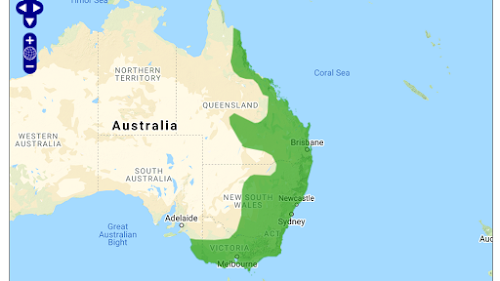Perhaps the iconic bird species of West Gippsland? Certainly, easy to find in all sorts of places, including parks and gardens in towns, nearby bush reserves, rainforest gullies in the foothills, alpine forests and coastal woodlands.
 |
| Source: Birdlife.org |
This charming member of the robin-flycatcher family often sits motionless on the side of a tree watching for some prey on the ground. It isn’t too unusual for this bird to enjoy a morsel left behind by a foraging Lyrebird or burrowing Echidna. In a quiet patch of bush, using your boot to brush aside some leaf litter on the ground, will sometimes be enough to attract an inquisitive Eastern Yellow Robin.
 |
| The classic Easter Yellow Robin pose |
Generally, Eastern Yellow Robins are sedentary but there can be some local nomadism as the seasons change. In winter, most will move into more open woodland country, parks and gardens etc, returning to the denser forest for breeding in spring and summer.
 |
| The female usually builds the nest and may have three broods per season |
Eastern Yellow Robins build a cup-shaped nest of bark and fibres, lined with fine grasses and spider web. The nest is located in the fork of a tree, sometimes only a metre or two above the ground and is frequently camouflaged with mosses and lichen. The birds may have several clutches each season and it is thought that the some of the previous young will help rear a new brood.
Newly fledged Eastern Yellow Robins are distinctly different in appearance to their colourful parents.
Local places to see this West Gippsland iconic bird include Bellbird Park in Drouin, Nangara Reserve at Jindivick, Uralla Reserve at Trafalgar, Mt Worth State Park, throughout Bunyip State Park, etc.



No comments:
Post a Comment